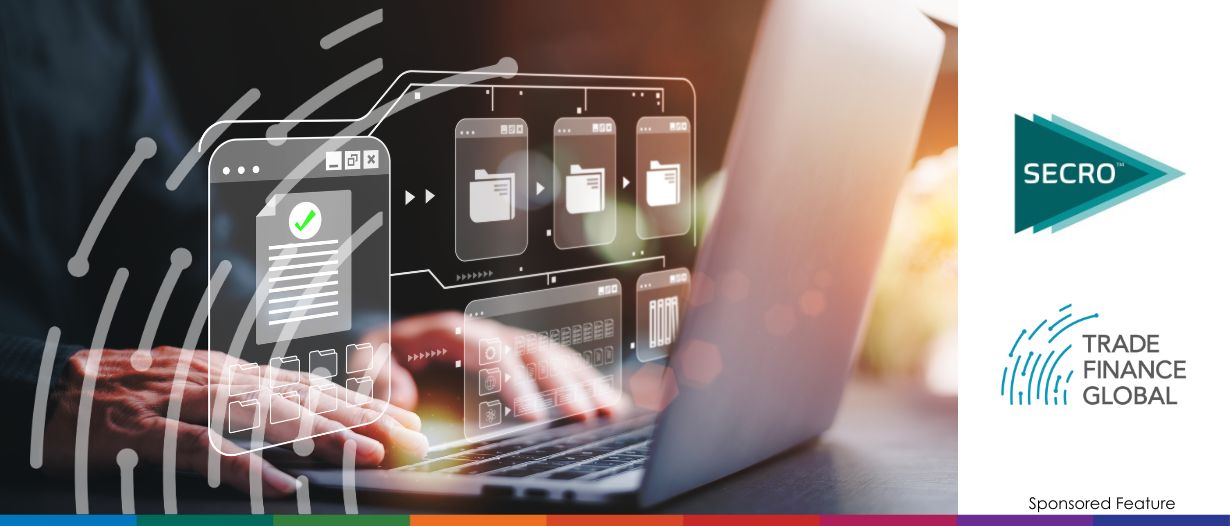Estimated reading time: 8 minutes
For centuries, trade documentation has been a time-intensive and resource-demanding process, involving a multitude of stakeholders and a deluge of paperwork. Central to this process is the bill of lading, the most critical document in international trade.
While traditional paper bills of lading have long been a staple in international trade, the ubiquitous use of electronic bills of lading (eBLs) is yet to be seen.
Acknowledging the need for a shift, several governments are now championing electronic documentation acts. Recent legislations like Singapore’s Electronic Transactions Act (ETA) and the UK’s recently enacted Electronic Trade Documents Act (ETDA) 2023 exemplify the global move towards widespread adoption of eBLs in the industry.
However, the successful implementation of an electronic bill of lading system hinges on a practical infrastructure and a legal framework tailored for the seamless cross-border utilisation of electronic bills of lading, preserving their full legal rights similar to their paper counterparts.
This is precisely where Secro steps in, offering a straightforward, secure, and user-friendly application. Covering the entire bill of lading (BL) process, from drafting shipping instructions to printing and exchanging originals, Secro’s platform adeptly digitises paper bills of lading and enables users to perform all the functions of a paper bill of lading with increased speed, seamless user interaction, and unmatched security.
In this episode of Trade Finance Talks, TFG’s Deepesh Patel was joined by Michele Sancricca, Co-founder and CEO at Secro, to learn more about the company’s electronic bill of lading solution, its evolution and legal validity, and how it has the potential to bring innovation and change to an industry that is long overdue.
Evolution and Legal Validity of eBLs – A new era
Although eBLs have been in existence for over two decades, their adoption in the industry has remained painstakingly slow. A key factor contributing to this delayed acceptance has been the uncertainty surrounding their legal validity or lack thereof, particularly in the absence of a comprehensive cross-border legal framework.
The tide, however, began to turn with the pivotal embrace of eBLs by the legal systems of both Singapore and most recently the UK. Sancricca underscored this significant shift, stating, “Provided that our solution matches the requirements of these laws, then you really have a fully-fledged bill of lading in digital form.”
Prior to this milestone, eBLs have been primarily rooted in contractual law, confining their binding nature solely to the contracting parties. They fall short of regulating the rights and obligations of third parties involved.
As he pointed out, “What we had so far are just contractual law-based bills of lading, which, yes, are electronic, but they are just an artefact. They are not really embodying all the functions and the legal rights of a paper bill of lading.”
The need for an international solution that could harmonise with traditional trade practices and legal norms became evident, and this need was effectively addressed through the enactment of laws in these jurisdictions.
Nonetheless, Sancricca noted that challenges still persist, particularly for companies that have grappled with older electronic document solutions.
He said, “The big challenges are with those companies that already tried legacy electronic solutions. They got burned with the lack of scalability and with the cumbersome legal setup and compliance that included at the beginning with the so-called rulebook.”
While current eBL providers follow complex rulebooks that serve as a mutual agreement to treat the eBL as equivalent to its paper counterpart, Secro’s solution leverages Singapore’s ETA as well as the recent UK’s ETDA, which deem eBLs operationally identical to paper.
It creates a digitally native token that represents the BL on a digital ledger—in alignment with the requirements of both laws. This innovative legal framework gives Secro’s eBL universal recognition and legal validity worldwide, all within an easily accessible user interface in contrast to the prior reliance on private rulebook agreements.
In addition, Secro has amassed a series of legal endorsements, providing robust affirmation of its approach. Industry giants, along with prominent corporations, shipowners, law firms and banks, have lauded the Secro solution, with the International Group of Protection Indemnities granting formal approval back in 2022.
“We got many formal nods of approvals from some very well-known corporates and shipowners that are looking into Secro as a viable solution for their needs,” Sancricca added. These resounding endorsements underscore the industry’s acknowledgement of Secro as a forward-thinking and reliable solution for modern trade documentation needs.

Blockchain and Ricardian Contracts: Empowering eBLs
Blockchain technology, though often met with scepticism, carries immense potential to revolutionise the legal validity of eBLs. Sancricca, explaining Secro’s groundbreaking solution, emphasised, “Secro’s innovation is based on the concept of Ricardian contracts with the eBL. The user-facing end is a human-readable document that has all the characteristics of a digitally signed PDF with all the workloads and automation.
“But in the back end, you have a machine-readable component which is created on a blockchain on a private ledger. There is a very specific legal reason why we’re doing this because this non-fungible token under many jurisdictions of several countries is a security, opening doors for collateralisation against loans, for instance against a trade finance instrument.”
This distinction grants Secro’s eBL a level of universality and legal validity, enabling it to serve as collateral for loans, including those associated with trade finance instruments. This innovative approach not only ensures the integrity and legality of eBLs but also introduces a transformative solution in trade finance.
It provides banks with a tool to efficiently manage their balance sheets while offering a robust security measure in the collateralisation process marking a substantial step forward in the application of blockchain technology within the trade finance industry.
Furthermore, the imperative of maintaining robust control and unequivocal possession of the document is crucial in mitigating financial risk within trade finance processes. Thus, using a non-fungible token emerges as the most effective means to achieve this level of security.
Sancricca said, “The reluctance of banks to adopt eBLs as collateral or documents of title stems from the absence of nonfungible tokens in existing solutions limiting the true value of eBLs for banks, especially those adhering to the Basel III framework. They need to have tight control and demonstrate in a very clean-cut manner the possession of the document. There is no better way to do this than with a non-fungible token.”
On another note, the legal recognition of the digital non-fungible token addresses the compliance and risk-weighted assets considerations, aspects often overlooked in discussions surrounding the use of eBLs.
This recognition deems it a low to medium-risk shipping guarantee for banks. Sancricca clarified, “Looking at Secro as a Ricardian contract, it is an item that can be taken off of the balance sheet of the bank. This basically allows the bank to reduce the credit exposure for that specific loan that is issued by the bank to finance a transaction. In essence, the bill of lading, even in its digital form, functions as a shipping guarantee because of the legal recognition of the digital non-fungible token as a guarantee.”
Secro’s innovative approach, rooted in blockchain and Ricardian contracts, not only elevates the legal and operational integrity of eBLs but also presents a transformative solution for financial institutions.
Embracing the future of trade documentation: A call to action
Sancricca outlined Secro’s forward-looking vision, placing a strong emphasis on seamless onboarding experiences and user-friendly interfaces for all stakeholders in global trade.
He asserted, “Our plan is to reduce onboarding friction and provide our solution to banks, allowing them to seamlessly integrate electronic bills of lading into their operations, passing it on to their clients as a solution to reduce the risk for clients, as well since it is not only about the banks.”
Additionally, he highlighted the advantages of electronic billing, which leads to quicker payments and a decrease in reliance on indemnities for shipowners, traders, and shippers. This streamlined process also minimises the risk of fraud for all parties involved.
“Electronic billing reduces the risk for shipowners because you don’t need any more leftover indemnities and enables traders and shippers to be paid faster and buyers to take consignment of their cargo quicker,” he noted.
Moreover, with the UK’s ETDA now in effect, Sancricca urged action. He acknowledged the inherent hesitancy of banks in adopting new solutions, yet underscored the daily acceptance of substantial risks tied to paper documents stating, “Banks are very hesitant to embrace new solutions, but at the same time they are accepting every day a lot of risk with paper documents. Think about what happened to UniCredit and Euronap. They lost 25 million in a single claim.”
Besides, Sancricca anticipated a transformative shift where electronic documentation would become the norm. He cautioned against the potential risk of falling behind in a rapidly evolving landscape, emphasising the importance of embracing proven technologies backed by legal foundations.
“Look at new technologies that are now proven solidly, legally backed up and embrace electronic bills of lading. There is going to be a tipping point where this is going to be the standard in the industry. Think about SWIFT, about the electronic signature. Today is a standard and electronic bills of lading are going to be the standard for trade documents very soon,” he recommended.
In a final note of encouragement, Sancricca drew parallels with historical precedents in other industries which faced initial scepticism, saying “If you look at past technologies that have been adopted in different industries, it has been the same. Think about electronic charts for navigation. There has been a lot of scepticism about that. But now, they are the standard for every shipping company.”
In embracing these changes, the international trade industry can successfully leave behind the constraints of paper-based processes entering an era of streamlined operations and reduced risks for all involved parties.





























